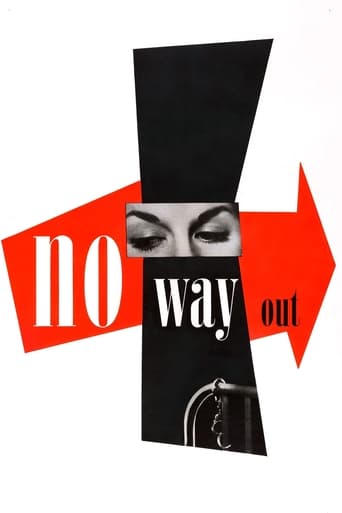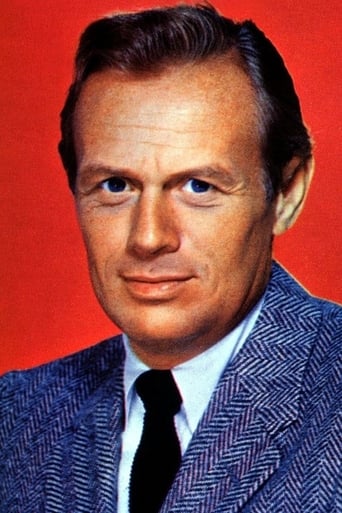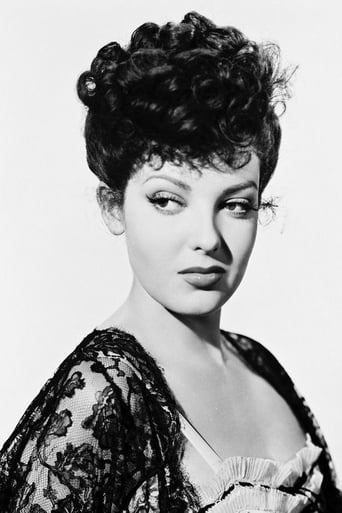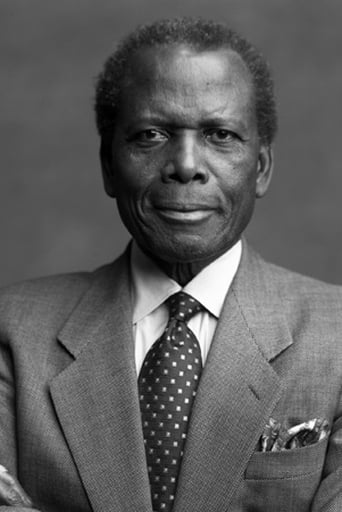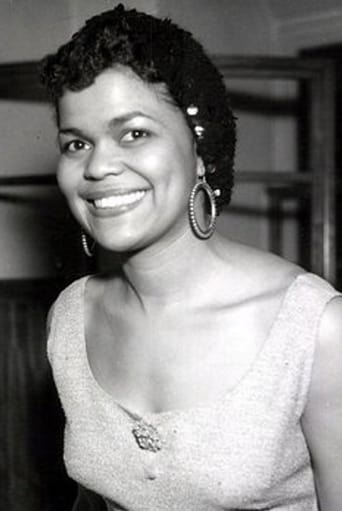Stoutor
It's not great by any means, but it's a pretty good movie that didn't leave me filled with regret for investing time in it.
TrueHello
Fun premise, good actors, bad writing. This film seemed to have potential at the beginning but it quickly devolves into a trite action film. Ultimately it's very boring.
Bergorks
If you like to be scared, if you like to laugh, and if you like to learn a thing or two at the movies, this absolutely cannot be missed.
Philippa
All of these films share one commonality, that being a kind of emotional center that humanizes a cast of monsters.
classicsoncall
Anyone here see "Django Unchained"? You recall all the controversy over the excessive use of the 'N' word and the blatant racism in that picture? I counted the 'N' word seventy seven times myself in Django but I'm sure I was distracted and missed a few. But now here's "No Way Out" from 1950 - that's over sixty years ago and I have to wonder what movie audiences were saying about it back then. I know I heard Widmark use the 'N' word repeatedly, along with a host of other colorful racial slurs like boogie, coon, black boy and sambo. I can't say that I've seen any film that predates this one to tackle racism on this scale so dramatically and effectively.There's another possible connection to 'Django' that I'd like to bring up, but this one might be a stretch. Remember who King Schultz and Django were tracking at the beginning of the story? - it was the Brittle Brothers and there were three of them. Brittle - Biddle? I'm probably way out on a limb here, but it could have been buried in Tarantino's subconscious somewhere.Well enough of that. Making "No Way Out" was a gutsy move for all the parties involved. Twentieth Century Fox head Darryl Zanuck decided to personally produce the film because of it's controversial nature. He got this young kid Sidney Poitier to portray the role of Dr. Luther Brooks, brand new intern at a county hospital prison ward. Poitier had been signed to do a Broadway play when this part was offered, so using that as leverage, tried to renegotiate his salary to do the play. No dice they said, thinking it was a bluff, and so a movie career was born that's lasted a half century.Complementing Poitier in his breakout role include Richard Widmark as the uber-racist Ray Biddle, and Linda Darnell as a waitress from the wrong side of the tracks trying to make a better life after escaping a stormy marriage with Johnny Biddle, who's death triggers the conflict of the story. Now Edie Johnson, she marks her upward mobility by proclaiming "I used to live in a sewer. Now I live in a swamp".Getting back to the racial component of the story, not only was it the language that jolts the viewer, but the actions of the characters as well. Widmark's character blows cigarette smoke in Poitier's face at one point while being treated for a gunshot wound, and later in the story just after a full scale race riot, an elderly white woman spits in Poitier's face in retaliation for her husband's injury. Man, I would have loved to been around for the decision making process to see how these scenarios were argued.Personally, my favorite Poitier film is 1967's "In the Heat of the Night", but you can see how the template for his better known films was introduced here. Often cast in roles where he had to overcome bias and racial hatred, his characters have come to represent the best aspects of humanity by transcending stereotypes and blind prejudice. In that respect, "No Way Out' was somewhat a misnomer for this talented black actor.
dongwangfu
Whether you like Mankiewicz or not (generally, I find his films too melodramatic), this one is very worth watching just as a window into the past.It was released in 1950, and gives a fascinating critique of race in America when Martin Luther King, Jr., was still in Divinity School. The resentments and misconceptions of the various characters -- the white hospital administrator who believes graduating black doctors will increase funding, the black elevator operator who believes black doctors have to pass tests white doctors don't. Then there is the depiction of racism as virulent, irrational, and pathological -- Widmark takes the bus to crazy-town and doesn't take a transfer for the return trip. But the one character that holds everything together is Linda Darnell's Edie Johnson. She's the character who develops -- everyone else is basically static. She's a lot like Widmark's Ray Biddle. As a woman from the wrong side of the tracks, she's not gotten a lot of breaks. So she's prey to his "blame-the-negro" rhetoric. But the best scene in the movie is one in which she is in her apartment with Biddle's brother George. She hears a domestic dispute out the window, and maybe it is a coincidence, but it spurs her to action -- and the action she takes is the hinge for the end of the movie. So while this movie had a lot of Drama (Widmark chews the scenery in a way the more understated Poitier is generally able to avoid), it was truly fascinating.
MartinHafer
NO WAY OUT is one of the best films about race prejudice that Hollywood ever made. One of the reasons this is so is because of the crude, evil and unflinching language used throughout the movie. If the movie were made now, it would most likely be sanitized--and that's a shame, as the vileness and stupidity of racism is diminished when film makers censor their message in order to avoid offending people. This movie is patently offensive--and because of that, it succeeds in telling a story that really packs an emotional wallop.Sidney Poitier plays a young doctor who was unfortunate enough to treat two brothers who are thieves on the jail ward of the hospital. Unfortunate, because one brother dies (through no fault of the doctor) and the other is such an insane racist (Richard Widmark) that he is sure the doctor killed his brother--though it's only because Poitier is black that he believes this. In Widmark's view of the world, blacks are garbage and he gives this doctor nothing but hatred and disrespect. Even when it is proved that Poitier did NOT kill this patient, Widmark is determined to get revenge...one way or another. There's a heck of a lot more to the plot than this, but I'll hold back so I won't spoil the suspense. And, speaking of suspense, this is one of the tensest films I've seen in some time--it kept my interest every minute.Some performances are worth noting. First, Stephen McNally plays one of his rare performances as a nice guy. Usually, he played heavies--gangster types. Here, he plays a fine human being--and I was shocked to see this. Second, Richard Widmark really did a great job. I know in real life he was a very liberal man and a champion of causes such as race relations. Yet, you'd never know it based on this venomous performance--he is one of the nastiest, if not the nastiest, racist I've seen on film. He gave a very ugly face to white supremacy--and showed just how sick racism is. As for Poitier, he was just great--as you'd naturally expect. I was just surprised that this was his first Hollywood type role--he seemed like an experienced vet.I think, however, the biggest stars of the film are the screen writers (Joseph L. Mankiewicz and Lesser Samuels) and director (Mankiewicz once again). The screenplay was simply amazing--convincing, taut and believable. The direction was also first-rate--something you'd expect from the same guy who brought us classics like ALL ABOUT EVE and A LETTER TO THREE WIVES. One scene in particular that I loved was when the flare was fired. That long pause as everyone was just frozen before the race riot began was brilliant--many directors wouldn't have used the pause and would have missed this chance to build the tension.A great film.
kenjha
After a white criminal dies on the operating table, his bigoted brother blames the black doctor, leading to race riots in the city. Poitier does OK in his film debut, although not giving much indication that he would go on to become a big star. Widmark overacts as the sneering bigot, the kind of villainous role he often undertook during this period. By contrast, McNally is nicely understated as an earnest doctor. Darnell is fine as a shady woman from Widmark's past. Mankiewicz's career peaked from 1949 to 1951, with this falling in the midst of a series of fine films. This film was undoubtedly daring for its time, but it does seem a bit contrived now.
